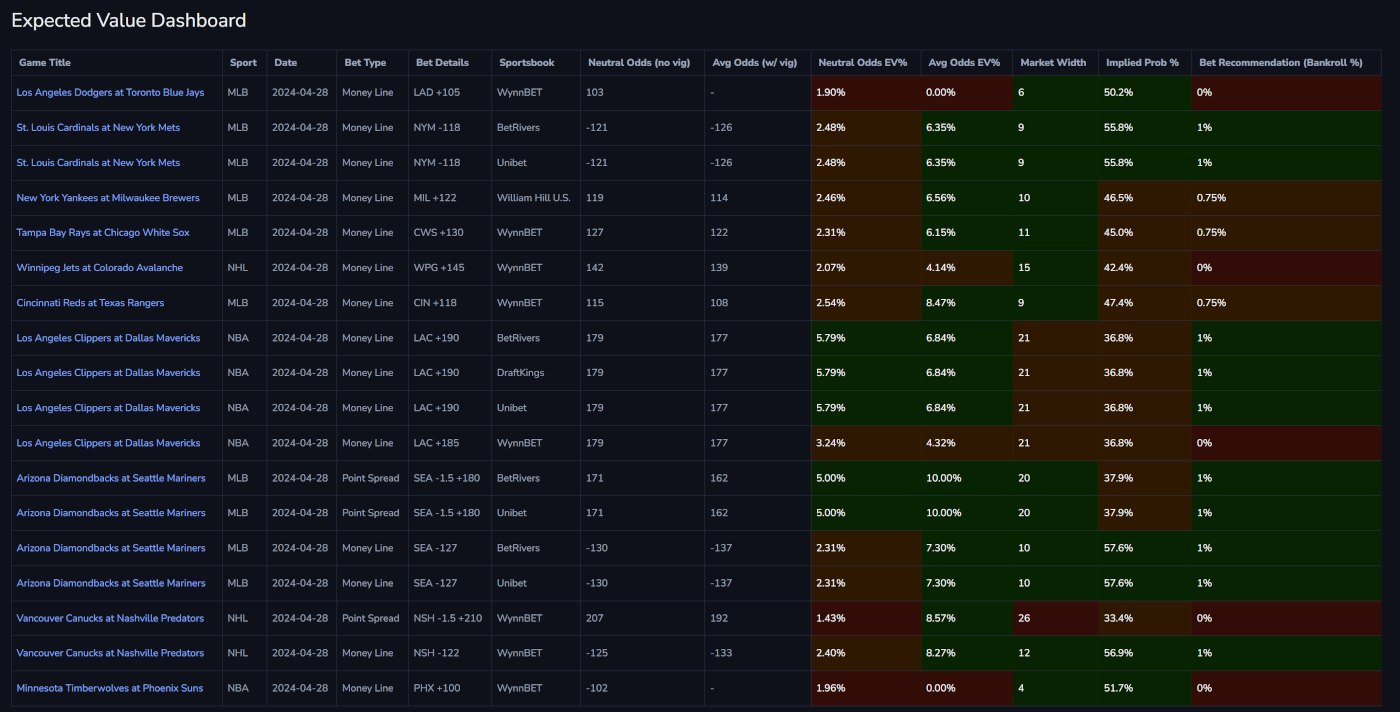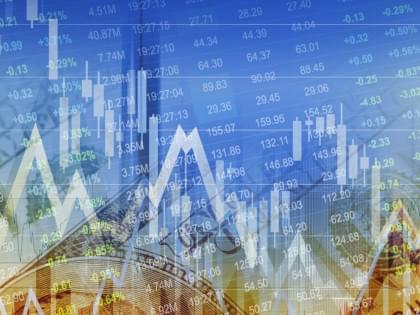Just like many successful sports bettors, I firmly believe in betting smart by considering expected value. Essentially, I think that the sports betting market works just like other financial markets - efficiently and based on market activity. This means that prices are set according to how much people are betting, determining the odds for each game. While this might not be as true for less popular sports with fewer bets, it definitely holds up for the big games everyone's watching.
Sports betting offers a unique thrill compared to trading in financial markets, thanks to the diverse prices offered by different sportsbooks. Unlike the stock market, where prices are consistent across all brokers, sportsbooks provide a range of odds for bettors to mull over. Though the variations in prices may be subtle between sportsbooks, there's definitely a variety of choices on the table. By grasping the true odds of a game, smart sports bettors can take advantage of situations where a sportsbook misjudges a game's price. This forms the essence of expected value betting in the world of sports. For more insights on this topic, check out our blog post Boost Your Odds and Bankroll: Utilizing Expected Value in Sports Gambling.
Even though we understand how crucial expected value is in sports betting, a lot of us struggle to make the most of it because we can't always access the best odds from sportsbooks. When I first started getting into expected value betting, this limitation held me back because I didn't want to bet on games with unfavorable odds. This mindset makes sense for careful bettors, but it's worth exploring how expected value can help everyone, no matter which sportsbook they use.
Let me give you an example from early 2024 when we rolled out the Expected Value dashboard on the Cappers web app. This cool new feature got me really interested, and I started keeping a close eye on how it was performing. At first, the dashboard just showed whether there was value in games or not. But then I started wondering: if there's value, how much should you bet? Should a higher value mean a bigger bet? I did some digging into game theory and came across a research paper talking about using the Kelly Criterion to decide bet sizes based on game value. That led me to write a blog post called Double Down or Play It Safe? Understanding the Kelly Criterion Gambling Strategy to explore this further. I even added a new column to our Expected Value dashboard that tells you what percentage of your bankroll you should wager on each game, based on the Kelly Criterion formula and how much value is in that game.
So, the Expected Value dashboard started dishing out betting recommendations, making it crucial to keep an eye on how well it was doing. Things kicked off great in February, scoring a sweet 40 units. But March hit us with a 20-unit loss, only to bounce back in April with a cool 28-unit profit. Fast forward to mid-May, and we're sitting pretty with 21.85 units of profit from the dashboard's picks. Despite the wins, I couldn't shake off the feeling that I was missing out because my sportsbook's odds were kinda meh compared to what the dashboard showed. So, I played it safe and mostly sat out on games. To tackle this hurdle, one smart move would be to mix things up by signing up with different sportsbooks, snagging those sweet signup bonuses when you can, and checking odds across various platforms before placing your bets. Back then though, I wasn't too keen on spreading my bankroll thin across different books because I felt like my betting unit at each book would be too small to make things interesting.

One day, it hit me - the plays on the Expected Value dashboard were profitable no matter whose odds we used. Sure, sticking to the best odds would bring in more profit by month's end, but even with slightly worse odds, we'd still make money. This realization sparked my interest in market inefficiencies in sports betting. Essentially, it's about spotting value in certain events and taking advantage of pricing inconsistencies across different sportsbooks. Betting into this instability can be a smart move when there's clear value to be had.
Since then, I've been rolling with all the plays suggested by the Expected Value dashboard, no matter the odds my sportsbook throws at me. I'm still keeping tabs on how well the dashboard's picks are doing with the juiciest odds available, but I'm also keeping an eye on my own bets placed at my bookie. Sometimes I luck out and get the same odds as what's on the dashboard, but other times I'm stuck with less favorable odds. Still, by sticking to the recommended bet sizes for each game, I'm managing to come out ahead. Take yesterday for example - a jam-packed Sunday with NBA and NHL playoffs in full swing along with every MLB team hitting the field. The EV dashboard had 23 plays lined up throughout the day and I went for all of 'em. Remember, not every bet was for the same amount - some were 2 units while others were just half a unit or somewhere in between. The final tally was 11 wins and 12 losses, but what really matters is that following the EV dashboard's picks snagged us a sweet 9.04 units in profit from those top-notch odds. My own picks, which matched up exactly but didn't always have those primo odds, still managed to rake in 7.57 units of profit. Sure, it would've been nice to pocket that extra 1.47 units from better odds, but hey - turning a profit of 7.57 units ain't too shabby for a day where no real handicapping sweat was shed. No digging into team stats or trying to figure out who's got an edge here - just going with what the dashboard dishes out and betting as advised based on my bankroll percentage breakdowns.
Not every day is going to be a cash cow either, but on days like this when there's loads of action going down, chances are good you'll come out ahead more often than not - just like we've seen from those monthly performance numbers showing this method is pretty much a surefire way to keep that profit train chugging along over time!
I understand that not everyone may be on board with this approach for various reasons. Some sports bettors might not feel comfortable wagering in situations where the odds don't offer real value. That's totally fine. I also know that many bettors prefer to rely on their own judgment and knowledge of the game rather than just crunching numbers like a computer. It's all good, everyone has their own style. But for folks like me, we enjoy treating sports betting as a bit of a strategic game, always on the lookout for opportunities in the market to make some smart bets. It doesn't mean we don't love watching games or know our stuff – it just means we have a method that works for us and takes away the stress of constantly picking winners.
While I usually advocate for an expected value approach to sports betting, sometimes you can spot inefficiencies in the market during certain events that are worth exploiting. It might not be easy to do this manually, but tools like the Cappers.ai Expected Value dashboard can make it a breeze. Plus, you can give it a shot risk-free with our free trial! Good luck out there and thanks for reading!






